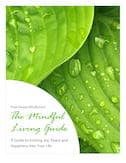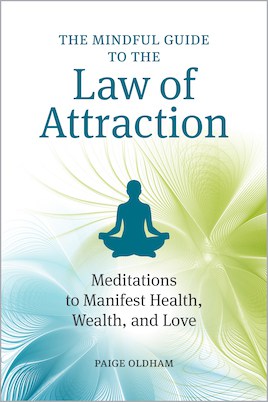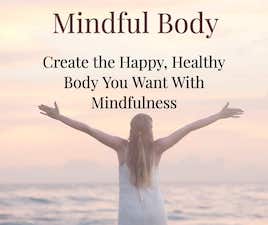If you live with any kind of chronic pain, you know how debilitating and frustrating it can be. The Western medical model would lead you to believe that your physical pain can only have physical causes. When tests can’t point to any clear answers, doctors generally prescribe anti-depressants and opioid painkillers to mask the symptoms.
Sadly, opioids have been shown to be extremely addictive and have led to the deaths of thousands of people. Knowing this, many chronic pain sufferers are looking for more natural treatment strategies. The most promising and non-invasive treatment for chronic pain is mind-body therapy.
How Does Mind-Body Therapy Help Chronic Pain Sufferers?
It’s well documented that there’s a deep connection between our psychological (mind) and physiological (body) well-being. Simply put, the mind and the body are one. What we think often affects how we physically feel and vice versa.
Chronic physical symptoms can cause people to fall into a downward spiral of negative thought patterns reinforcing pain sensitivity. These negative thoughts and emotions are often subconscious and require a regular mindfulness practice to correct. You can’t change what you’re not aware of. Mind-body therapy is so beneficial because it’s able to get to the root of what’s reinforcing chronic pain symptoms: the mind.
Below are four popular mindfulness techniques that all chronic pain sufferers can benefit from:
Four Miraculous Mindfulness Healing Strategies
1. Journaling
As mentioned above, emotions play a huge role in how you perceive physical pain. In some cases, your emotional life could be the main contributing factor to pain symptoms. One of the best ways to get a sense of what’s going on in your subconscious mind is to start journaling every day.
Studies have shown that people who keep a journal have less emotional stress, a stronger immune system, and less physical pain than people who don’t. While there are plenty of apps out there that can help you jot down your thoughts electronically, using old-fashioned pen and paper has proven to be more effective in helping people to process their emotions. Just one page a day can work wonders.
2. Meditation
Much like journaling, breath meditation allows chronic pain sufferers to gain a healthy detachment from their thoughts and feelings. By accepting any thought that comes into the mind with gentle awareness and curiosity, meditation trains people to better recognize negative thought patterns and become less reactive.
Meditation, like mindfulness, isn’t a magic pill that you can take once or twice and have all that ails you cured. To reap the full benefits, you have to practice every day, even if it’s only for five minutes.
People who are in great pain and find it difficult to focus on their breath might consider downloading a guided meditation app. One of the most popular and effective meditation apps specifically for chronic pain sufferers is called Curable. The designers behind Curable all used mind-body techniques to cure themselves of chronic pain conditions like lower back pain and carpal tunnel syndrome. After you type in your symptoms, the Curable app will create a personalized training program you can practice every day wherever you are. Another great app created by pain sufferers that uses similar evidence-based methods is Pathways. It’s great to see more of these effective methods of reducing pain appearing that are accessible to everyone.

3. Cognitive Behavioral Therapy
When I started hearing about cognitive behavioral therapy (CBT), I did a little research to better understand how this type of therapy could be so effective. What I found it that it’s basically a systematic way to use mindfulness to be happier.
While CBT is more commonly used in therapeutic settings treating depression or anxiety, many people experiencing chronic pain notice great relief by visiting a CBT therapist every week. Ironically, this is because a majority of those with chronic pain also suffer from things like depression or anxiety.
These issues, on top of chronic pain symptoms, can cause a huge strain on a people’s relationships and lives in general. CBT therapists can help chronic pain sufferers identify subconscious negative thought patterns and develop positive coping strategies.
CBT therapy can provide the opportunity to resolve deep emotional traumas that manifest in parts of the body as chronic pain. Chronic pain sufferers who regularly see CBT therapists often report a huge reduction in stress, better relationships, and a greater sense of self-esteem.
4. Deep Breathing Exercises
Most people don’t know how to breathe properly. Due to our fast-paced lifestyles, most of us have adopted a very shallow form of breathing that doesn’t supply our body with enough oxygen. This constant shallow breathing is a major contributor to stress and chronic pain symptoms.
One of the best things you can do to reduce stress quickly is to take a few deep breaths using the following technique: Breathe in deeply through the nose for a count of four, then breathe out for a count of eight, ensuring that you expel all the air in your lungs. Repeat this three or four times. For more specific instructions on breath meditation, you could try an app like Breethe.
Final Tips for Using Mindfulness to Relieve Chronic Pain
All four of these mindfulness strategies have been proven to have a positive impact reducing physical and emotional pain. It’s a great idea to combine many mindfulness exercises each day to experience profound benefits in a short amount of time.
Whatever you choose to do, try to bring your attention to the present moment from a state of loving acceptance. This means that you don’t resist what currently exists. For example, if your back pain is flaring up, don’t wish it to go away or tense up against it (I know how hard this can be).
Instead, accept that it’s there and objectively observe all you can about it. Exactly where do you feel pain? What kind of pain is it? Be curious about it. Ask it for messages that may help you identify its source. I’ve done this myself to alleviate intense back pain as well as other more minor aches and pains. It works. Although it might be hard at first, you will start to see miraculous benefits over time when you practice mindfulness a little bit throughout each day.
Create the life you want: Combine the law of attraction with mindfulness
The law of attraction suggests that our positive or negative thoughts bring about positive or negative experiences. My latest book, The Mindful Guide to Law of Attraction, pairs that belief with the powerful practices of mindfulness. Through intentional breathing, writing, and engaging, you’ll hone a method for manifesting health, wealth, and love―the elements of happiness.
Let the law of attraction work for you by adopting its basic steps of identifying and visualizing the things you desire. Then use 45 practical meditation techniques included in the book to achieve awareness. By concentrating your positive energy on obtaining your wants, you’ll give yourself permission to receive them.
To your happiness! ~Paige

You can find this book at Amazon, Barnes & Noble, Books-A-Million, and Indigo.








 The Mindful Living Guide
The Mindful Living Guide




Thank you so much for this post.Very well written. I think if mind is happy our body also feels happy.I am very much interested in this type of healing rather than getting medical treatment. I
This is a wonderfully informative post on healing from pain Paige. The tip you shared here are excellent.
This one here is amazing. It really helped me with my paroxsmal hemicranie. Cant believe it worked. Ill stay with it i think. Lots of thanks to you guys!
I’m so happy to hear that this worked for you, Richard! Headaches can be quite challenging.
Thanks Paige for a terrific post. I especially appreciated the Journaling section in which you pointed out that those who regularly journal “have less emotional stress, a stronger immune system, and less physical pain than people who don’t.” And by the way, I’m “old-fashioned” by nature, lol.
Very well written. I think if mind is happy our body also feels happy. Meditation and deep breathing are the core exercise for the peace of mind. Thanks for sharing it Paige.
Hello Paige, I am sure many will stop getting into a hasty decision of getting a surgery done for their pain after reading this post. Great information. With lack of time, we always think getting operated is the only way. Thank you so much for this reliable method of getting cured without any surgery.
Thank you for pointing out that learning to breathe the right way will actually bring much oxygen to the brain, relieve the body of stress, and reduce the symptoms of chronic pain. If that is the case, then I really need to try breathing properly. I think this will help, but I think that visiting a medical professional will also help me out. After all, I do not know where the pain came from. I need to know more about it.
Hi Paige,
Most of us will not even be aware of such natural remedies for the chronic pains. This leads to end up with painful surgeries and some may not be successful even. Thank you for sharing the wonderful information. Helps a lot.
I completely agree with you. That’s why I’m spreading the word. Thank you for your very kind comment, Stella!
I am very much interested in this type of healing rather than getting medical treatment. I wish I can meditate more and do simple exercises like deep breathing. It’s just that there are so many distraction around the office and when I get home, too many chores to do.
I know exactly what you mean, Jon. I work a full-time job and have chores that go along with having a busy family with three kids. Taking time to meditate and care for yourself has to be a priority for you. At work, I have a reminder that pops up in the middle of the day reminding me to meditate. At home, most days I meditate before everyone is up or during the day when there’s a lull (like between working and cooking dinner). Life will always be hectic. It’s a matter of making the time for yourself a priority.
Hey, you have shared such a nice thing with us. Your blog can help many people who are suffering from Chronic pain. I will share this useful thing with everyone. Thank you so much and keep posting.
Really informative article. Most people suffering from chronic pain are unaware of mindfulness treatment for relieving pain and usually opt for pain killers. Its great that you have shared some unconventional pain treatment techniques. Thanks for sharing.
Thanks for your comment – especially from a pain and rehab establishment! The more the medical profession ‘prescribes’ these techniques, the less people will think that meds are the only treatment.
Great article!
I’ve been suffering with lower back pain for 20 years (male 46).
I recently started acupuncture with electricity and I must say it’s the most effective treatment for me so far.
I’ve tried loads of others but acupuncture is the only thing that makes any difference for me!
Acupuncture is a powerful way to open up blocked energy meridians allowing your natural energies to flow and move negative energies out of the body. So glad you discovered what works for you, Matt!
When my chronic neck pain was at its worst keeping a journal helped to figure out what made it worse. I realized that biofeedback is a something you should never ignore. Great article!
Thanks John! Love the idea of using a journal to record biofeedback. Our bodies contain the answers, if we’ll listen.
Great Advice! and I believe it will surely help anyone who is suffering from chronic pain as well as gives calmness and relief to your mind and body.
Thank you Lara! The mind and body are intertwined. Anything that helps must help the other.
Mindful ways for a great healthy life.
Journalling , it helps.
Thanks so much for the mindful ways.
Thanks so much Sanjyoti!
Thanks for this Paige. I too never realized that journalling could help pain. In the past when I was a migraine sufferer I would use affirmations. Simple ones, such as, I feel great. It might take 20 minutes or so to have any effect, so I would go and lie in a warm, relaxing bath. And amazing as it sounds…the migraine would dissolve. Giving me some respite, at least for a while. 🙂
I’m a believer in trying anything that helps us deal with chronic pain of any kind, so thank you again.
There are so many useful tools out there, Elle. It’s a matter of experimenting and seeing what works for each of us. I’ve used the method of smiling a big, all-over smile to change my negative mood and alleviate headaches. Relaxing in a bath could help cure just about anything.
How interesting, Paige. I would have never imagined that journaling can reduce physical pain! Thanks for these insights.
Anything that can help us process emotions can help to alleviate the pain that’s tied to that emotion. It’s kind of amazing how it all works. Thanks Sandra!
Hi Paige. Everything you mentioned would be helpful, but they will not get rid of the problem for good. People have to understand the real cause to treat the pain. The main reason people suffer from back pain is tight hip flexors. They need to loosen their Hip Flexors first. There are plenty of ways to do that. If anybody wants to know more about the ways, I recommend this page http://bit.ly/2BvYu3e
I understand your point, Steff. I focus quite a bit on “hip openers” and other exercises and stretches to address my hip flexors to keep my back pain at bay. The point in this article is that physiological aspects of pain are frequently caused by underlying emotional issues that can be addressed using the methods described. From my own personal experience, I spent years working on my hip flexors which provided little to no relief for my back pain. It wasn’t until I started to address the buried emotions did my back pain begin to disappear.
We have to use a holistic approach to healing, addressing both the mind and body aspects at the same time.
Yes I have used journaling, EFT, hooponopono and meditation to heal and know it works. xx
It’s been a while but I’ve also used hooponopono successfully as well. There are so many effective options besides medications. Thanks Suzie!
Working with the pain in your mind, through mindfulness, meditation, or CBT, even changes brain maps. When pain goes unchecked, focusing on it grows the sensation and the brain map. With mind/body techniques, a person can actually shrink the brain map and ease the pain. Norman Doidge’s book The Brain That Heals Itself has a whole chapter on it. Fascinating!
That’s very interesting Debbie! I’ll be checking out Norman’s book for more info. Thanks!!
I enjoyed your tip on being curious about the pain and asking for messages. Awesome! I’ve found mindfulness as a great way to relieving pain and inviting in wellness.
Thanks Evelyn! I’ve used the process of asking the pain for information successfully many times. It may sound woo-woo, but it works!